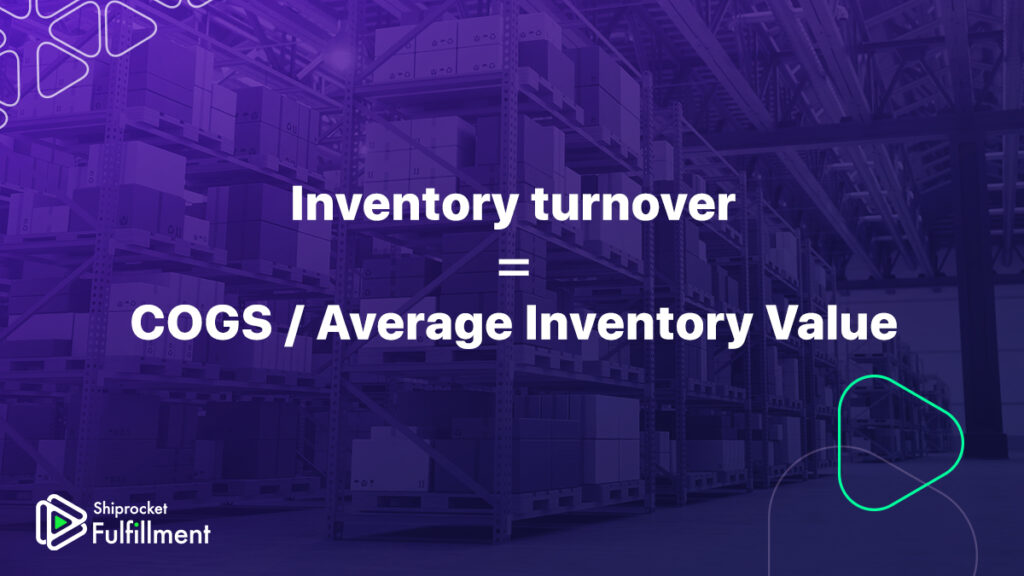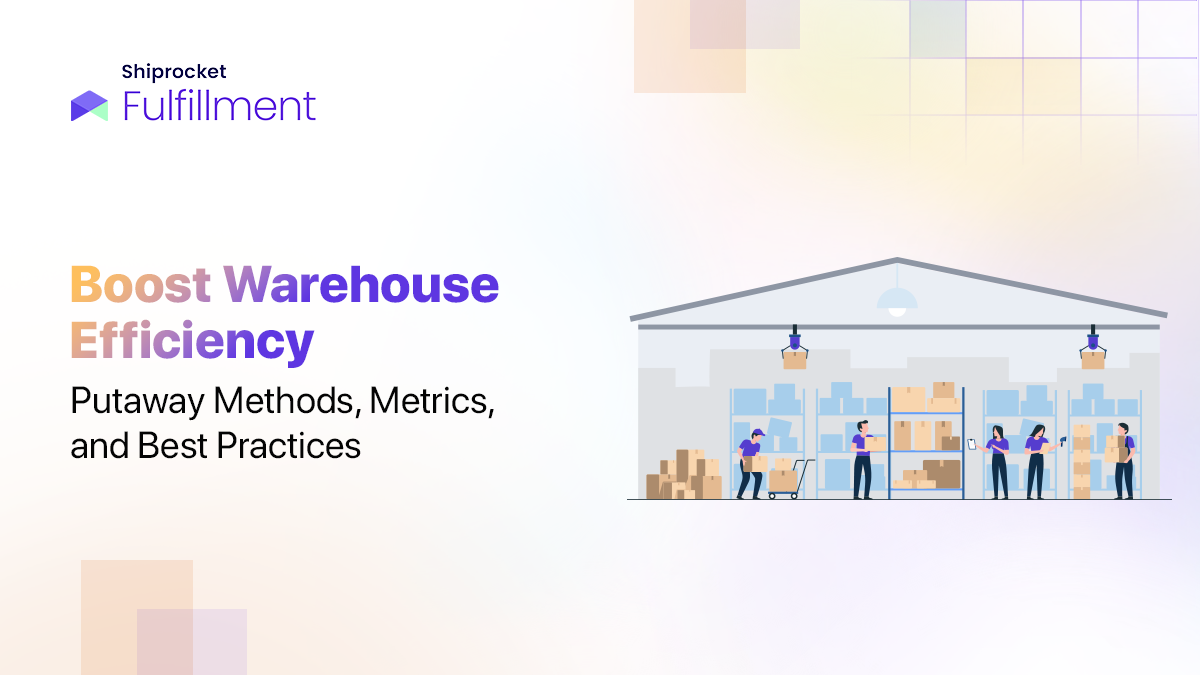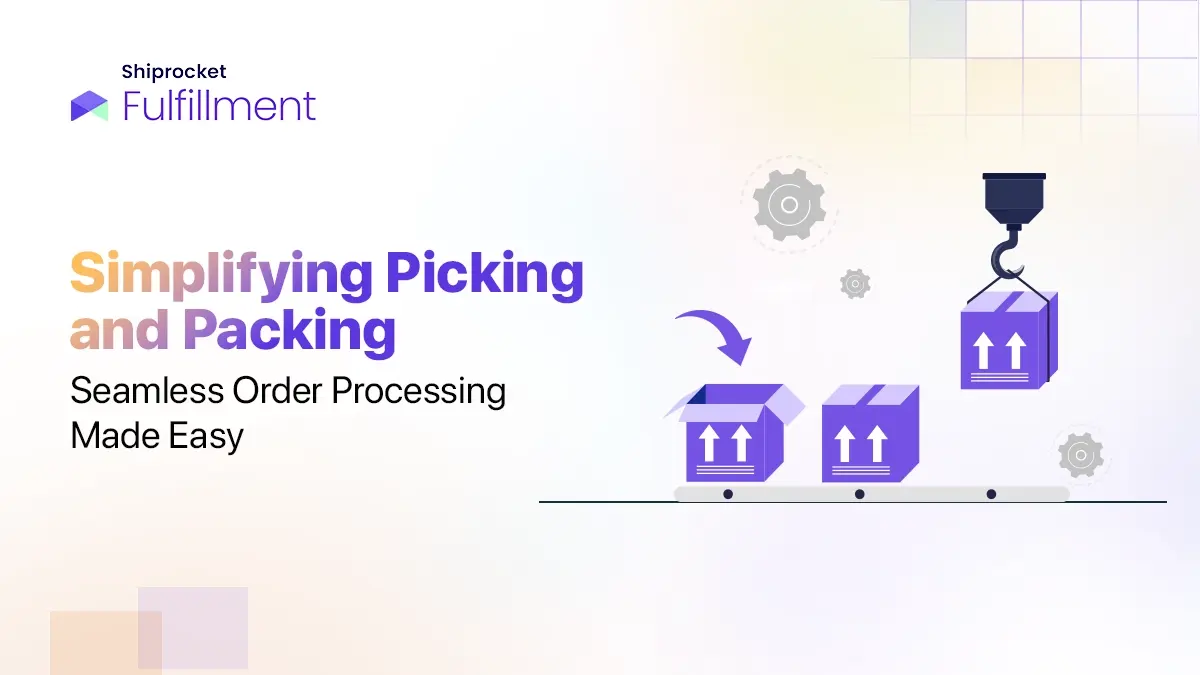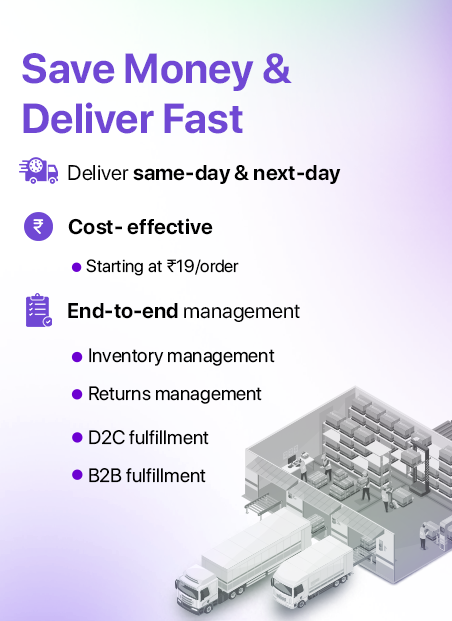Inventory management is an essential part of your fulfillment supply chain as the inventory is your biggest asset. You need to be updated with every aspect of your stock so you can manage it effectively. Understanding the statistics and analysis of inventory can help you make more informed decisions, increase efficiency, and improve cash flow.

Inventory turnover ratio is one such niche that you must check to ensure that your inventory is in sync with the supply chain. Let’s look at the inventory turnover ratio and how you can calculate and optimize it for your requirements.
Understanding Inventory Turnover Ratio
Inventory turnover ratio refers to the number of times inventory is sold and then replaced in a specific period.
For example, suppose you have 10 quantities of product X and want to check the inventory turnover for six months. In that case, the inventory turnover ratio will refer to the number of times X was sold and then replaced within six months.
Inventory turnover ratio is an essential metric as it can help determine business performance, sales, and the cost management of the supply chain.
Why is Inventory Turnover Ratio an Important Metric?
Inventory turnover ratio is an important metric because it talks about the products restocked. This has a direct impact on the sales and gives you a more clear picture of the products that were successfully sold. You can also analyze the business performance and allocate the correct costs to supply chain management operations.
How Can You Calculate it?
The inventory turnover ratio is calculated by finding the cost of goods sold for the defined period, finding the average inventory value, and dividing the goods sold by the average inventory.
So the variables involved are –
- Cost of goods sold for the period (COGS)
- Average inventory value – It is calculated by adding beginning inventory and ending inventory and dividing by 2.
Inventory turnover = COGS / Average Inventory Value

Let’s understand this with an example.
If COGS = 500000
Average inventory value = 250000
Then, Inventory turnover ratio = 2
Significance of Inventory Turnover Ratio
Now that you have calculated the inventory turnover let us understand the significance of low inventory turnover, high inventory turnover, and their impact on your business.
Ideal Inventory Turnover Rate
An important question is – what is a good inventory turnover ratio? The ideal inventory turnover between 2 to 4 is suitable for most businesses. Although this varies from industry to industry, the ratio between 2 to 4 indicates that the inventory restocking is close to your sales cycle. You are maintaining a balance between demand and supply. It also means that your sales match up to the amount of inventory you are restocking, and there is synchronization within your supply chain.

Low Inventory Turnover Rate
A low inventory turnover ratio of one or less indicates that you might have excess inventory. For instance, if you sell 40 units over 1 year and always have 40 units remaining in hand, it means that your inventory is piling up & you need to forecast demand accurately. You must avoid accumulating debt stock as it will be more expensive to get rid of it later on.
High Inventory Turnover Rate
Inventory turnover can indicate that the sales are good in a given period and your inventory is moving fast. However, if a balance is not struck, it can lead to situations of stockouts. Sellers must aim to achieve a high inventory turnover rate as it means that they will sell the inventory they have and re-purchase fresh stock more often.
Even with a high inventory turnover rate, you must keep a close eye on the average inventory value of products that require a longer time to be replenished.
Tips to Optimize Inventory Turnover Ratio
Solutions for High Inventory Turnover Ratio
If you have a high inventory turnover ratio, you need to order more inventory beforehand. In such cases, thorough demand forecasting can help ensure that you don’t run out of your products very soon. If the product is selling out very fast and replenishing will take time, it is intelligent to make fewer sales for a while. The negative customer experience is more dangerous than a few days of no sales.
Solutions for Low Inventory Turnover Ratio
A low inventory turnover ratio can be a difficult situation. There are several ways to go about increasing this number. First, you can offer promotions to get rid of the existing inventory by growing sales at a lower cost. You can also use this opportunity to drive customer loyalty, improve word-of-mouth marketing, and reach a large customer base.
Next, you can buy less stock and audit more often than purchasing a stock for an extended period and storing it. If the inventory is fast-moving, you can re-stock products, and if it is not, you can just get rid of the existing stock.
Signup With a 3PL Fulfillment Provider
A great way to maintain the ideal inventory turnover ratio is to get started with 3PL fulfillment providers like Shiprocket Fulfillment.
Shiprocket Fulfillment has thoroughly equipped fulfillment centers located across the country in eight major cities. These fulfillment centers share regular reports from their warehouse management systems and give you a detailed analysis of your inventory. Soon, we will also be providing you an accurate demand forecast with the help of predictive analysis. With the help of comprehensive data at your fingertips, you will keep track of your inventory and work better.
Conclusion
Inventory turnover ratio is an important metric to define your sales success, fulfillment supply chain operations, inventory management efforts, etc. We hope this blog helped make you understand how to calculate the inventory turnover ratio and apply it in your daily business operations.






